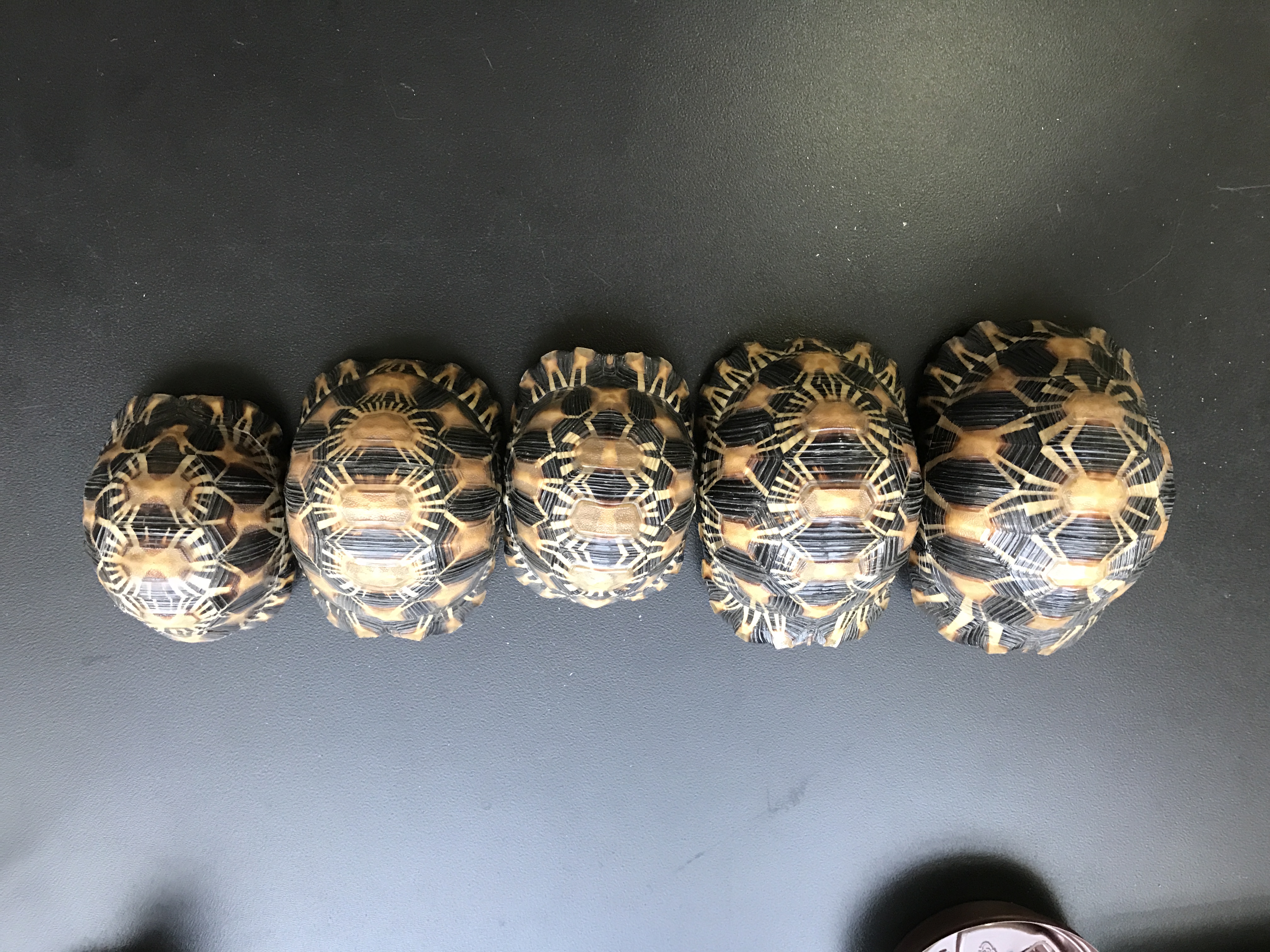 PDF(2045 KB)
PDF(2045 KB)


Analysis of illegal hunting cases of amphibians and reptiles in Jiangsu Province over the past three years
FEI Yiling, HOU Senlin, TANG Songze
Journal of Nanjing Forestry University (Natural Sciences Edition) ›› 2021, Vol. 45 ›› Issue (2) : 225-230.
 PDF(2045 KB)
PDF(2045 KB)
 PDF(2045 KB)
PDF(2045 KB)
Analysis of illegal hunting cases of amphibians and reptiles in Jiangsu Province over the past three years
 ,
,
【Objective】The objective of this research is to understand the characteristics of current illegal-hunting cases of amphibians and reptiles in Jiangsu Province, explore the trend of cases, and provide information to fight crime and protect wildlife resources.【Method】Based on illegal hunting and trade case data from the Forestry Public Security Judicial Identification Center of the National Forestry and Grassland Administration over the past three years (2017-2019), we focused on all cases of amphibians and reptiles that occurred in Jiangsu Province, and analyzed the case types and numbers, the time of occurrence and region, the involved animal species and number of each species, the species protection level, the inter-species relevance, etc.【Result】① The number of illegal trade cases of amphibians and reptiles in Jiangsu Province has increased over the past three years. Among all investigated animals, Testudines had the highest annual growth rate in both case number and involved species. ② About 76.0% of the amphibian and reptile species involved in the illegal trade cases were in the list of CITES, and “The List of National Protected Terrestrial Wild Animals with Important Ecological, Economic and Scientific Values”. ③ More than one species was involved in 66.0% of the cases. Animals belonging to the same order are most likely to appear in the same case with the highest relevance. The animals from Caudata and Serpentes appeared in the same case, with a positive correlation. Positive correlation also occurred between Lacertilia and Testudines, Lacertilia and Crocodyliformes, Lacertilia and Anura, in a decreasing manner. ④ According to the location of the applicants claimed for inspection, illegal trade cases occurred in all prefecture-level cities in Jiangsu Province. Among them, Nanjing, Yancheng and Xuzhou were severely afflicted cities, which contributed 51.3% of the total cases in the whole province. Cases related to Anura mainly occurred in Yancheng, while cases related to Crocodyliformes mainly occurred in Nanjing. Other cases, such as those related to Testudines, were mainly distributed in Nanjing and Wuxi, Serpentes cases were mainly distributed in Xuzhou and Nanjing, and Lacertilia cases were more likely to be found in Nanjing and Changzhou. ⑤ Regarding the temporal distribution, the peak season for illegal trade cases of amphibians and reptiles in Jiangsu Province was from May to September. The cases related to Serpentes, Anura and Testudines mainly occurred in June, August and September, respectively. There were no obvious trend for the cases of Caudata, Lacertilia and Crocodyliformes.【Conclusion】① The number of illegal amphibian and reptile cases increased in the last three years, and animal species involved in illegal hunting cases belong to different taxonomic groups. ② Illegal cases regarding Testudines and Lacertilia always occurred in the pet market, while those regarding Anura usually took place in the catering market; whereas, the Serpentes cases were found in both markets. Therefore, we should strengthen supervision and administrative services in pet and catering markets. ③ According to the species involved and time of occurrence, it is necessary to develop a specific protection strategy for different cities. It is very important to strengthen the import and export management of wild animals, to evaluate the potential risk of alien species, and to improve the handling and protection systems for alien species. By analyzing the characteristics of illegal trade cases of amphibians and reptiles in Jiangsu Province, this research provides strong scientific instruction for fighting illegal activities and protecting wildlife resources.

amphibians / reptiles / illegal hunting and trade / wildlife protection
| [1] |
|
| [2] |
|
| [3] |
|
| [4] |
杨清, 陈进, 白志林, 等. 中国、老挝野生动植物边境贸易现状及加强管理的建议[J]. 生物多样性, 2000,8(3):284-296.
|
| [5] |
胡诗佳, 彭建军, 于冬梅, 等. 华南地区兽类野生动物非法贸易状况及分析[J]. 四川动物, 2011,30(2):293.
|
| [6] |
尹峰, 梦梦, 敬凯, 等. 云南及边境地区野生动物及其制品非法贸易调查[J]. 北京师范大学学报(自然科学版), 2015,51(4):388-392.
|
| [7] |
候森林, 周用武. 野生动物识别与鉴定[M]. 北京: 中国人民公安大学出版社, 2012.
|
| [8] |
王杨, 赵言文. 江苏省野生动物资源现状及可持续发展战略与对策[J]. 江西农业学报, 2008,20(1):98-100.
|
| [9] |
王道敏. 野生动植物资源[J]. 江苏年鉴, 2019: 45-46.
|
| [10] |
邹寿昌, 陈才法. 江苏省(含上海市)爬行动物区系及地理区划[J]. 四川动物, 2002,21(3):130-135.
|
| [11] |
王剀, 任金龙, 陈宏满, 等. 中国两栖、爬行动物更新名录[J]. 生物多样性, 2020,28(2):189-218.
|
| [12] |
江苏省林业局. 江苏省林业局2018年度法治政府建设情况报告[R]. 南京:江苏省林业局, 2019.
Jiangsu Forestry Bureau. 2018 annual report on government’s legal construction of Jiangsu Forestry Bureau[R]. Nanjing: Jiangsu Forestry Bureau, 2019.
|
| [13] |
费宜玲, 周用武, 刘大伟, 等. 野生动物非法贸易网络化的危害和监管[J]. 野生动物学报, 2019,40(4):1031-1034.
|
| [14] |
|
| [15] |
周伟, 韩联宪. 野生动物利用、贸易与生物多样性保护[J]. 国土与自然资源研究, 1997(2):50-54.
|
| [16] |
|
| [17] |
|
| [18] |
|
| [19] |
梦梦, 马建章, 尹峰, 等. 我国典型城市外来野生脊椎动物贸易状况及管理对策[J]. 生物多样性, 2017,25(10):1137-1143.
|
| [20] |
时雨. 25个部门联手打击野生动植物非法贸易[J]. 绿色中国, 2019(8):50-51.
|
| [21] |
|
| [22] |
骆家林, 陈积敏. 野生动物资源犯罪的行为特征及治理思路[J]. 林业经济, 2016,38(10):74-77.
|
/
| 〈 |
|
〉 |